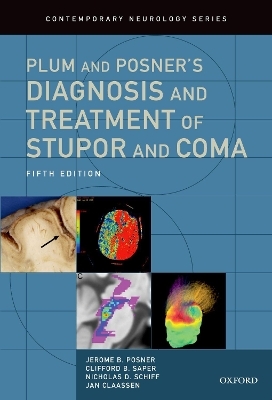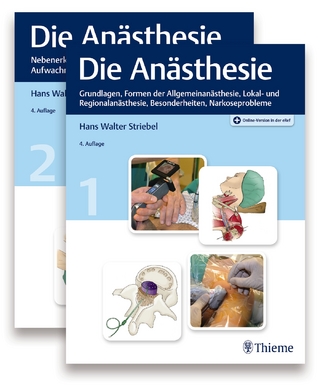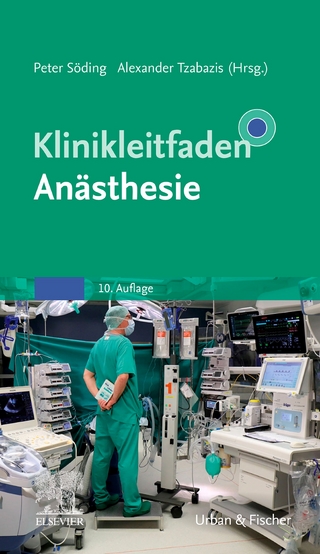
Plum and Posner's Diagnosis and Treatment of Stupor and Coma
Oxford University Press Inc (Verlag)
978-0-19-020887-5 (ISBN)
While providing detailed background for neurological and neurosurgical specialists, the practical nature of the material in this book has found its greatest use among Internists, Emergency Medicine, and Intensive Care specialists, who deal with comatose patients frequently, but who may not have had extensive neurological training.
Jerome B. Posner, MD is a Professor Emeritus at Cornell Medical College and former Chairman of Neurology at Memorial-Sloan Kettering Cancer center in New York. He graduated from the University of Washington before moving to Cornell University Medical College. He was appointed to the New York Genome Center in 2016. Dr Posner has held many leadership positions throughout his long and distinguished tenure at Weill Cornell and Memorial Sloan-Kettering Cancer Center, including being President of the American Neurological Association. He is a member of the National Academy of Medicine and served on the advisory council of the National Institute of Neurological Diseases and Stroke (NINDS). Clifford B. Saper, MD, PhD is the James Jackson Putnam Professor of Neurology and Neuroscience at Harvard Medical School and Chairman of Neurology at Beth Israel Deaconess Medical Center in Boston. He received his degrees, and did his internship in internal medicine, at Washington University School of Medicine in St. Louis, before doing a neurology residency at Cornell University Medical Center- New York Hospital. He was previously on faculty at Washington University School of Medicine and the University of Chicago. Dr. Saper has received a Javits Neuroscience Investigator Award from the National Institutes of Health, and was elected to the National Academy of Medicine. He is the Editor-in-Chief of the Annals of Neurology. Nicholas D. Schiff, MD is the Jerold B. Katz Professor of Neurology and Neuroscience in the Feil Family Brain and Mind Research Institute at Weill Cornell Medical College. He is a graduate of Stanford University and the Cornell University Medical College and completed his residency in Neurology at the New York Hospital where he trained with Drs. Fred Plum and Jerome Posner He is an elected Fellow of the American Neurological Association and the recipient of several awards, including the 2007 Research Award for Innovation in Neuroscience from the Society for Neuroscience and the 2009 Bakken Pioneer Award from the Earl and Doris Bakken Heart-Brain Institute. Jan Claassen, MD is an Associate Professor of Neurology at Columbia University and Director of the NeuroICU at New York-Presbyterian Hospital. He received a degree in medicine from the University of Hamburg. He underwent post-doctoral research training and clinical training in neurology, electrophysiology, and neurocritical care at Columbia University, NY. His research characterizes physiologic changes following acute brain injury, focusing on novel treatment approaches to potentially improve patient outcomes. His laboratory focuses on the development and bedside integration of novel electrophysiological and imaging techniques study recovery of consciousness in the acute brain injury setting. Dr Claassen has been intimately involved with national and international guideline development for patients with acute brain injury.
1. Pathophysiology of Signs and Symptoms of Coma
ALTERED STATES OF CONSCIOUSNESS
DEFINITIONS
Consciousness
Acutely Altered States of Consciousness
Subacute or Chronic Alterations of Consciousness
APPROACH TO THE DIAGNOSIS OF THE COMATOSE PATIENT
PHYSIOLOGY AND PATHOPHYSIOLOGY OF CONSCIOUSNESS AND COMA
The Ascending Arousal System
Behavioral State Switching
Relationship of Coma to Sleep
The Cerebral Hemispheres and Conscious Behavior
Structural Lesions That Cause Altered Consciousness in Humans
2. Examination of the Comatose Patient
OVERVIEW
HISTORY
GENERAL PHYSICAL EXAMINATION
LEVEL OF CONSCIOUSNESS
ABC: AIRWAY, BREATHING,
CIRCULATION
Circulation
Respiration
PUPILLARY RESPONSES
Examine the Pupils and Their Responses
Pathophysiology of Pupillary Responses:
Peripheral Anatomy of the Pupillomotor System
Pharmacology of the Peripheral Pupillomotor System
Localizing Value of Abnormal Pupillary Responses in Patients in Coma
Metabolic and Pharmacologic Causes of Abnormal Pupillary Response
OCULOMOTOR RESPONSES
Functional Anatomy of the Peripheral Oculomotor System
Functional Anatomy of the Central Oculomotor System
The Ocular Motor Examination
Interpretation of Abnormal Ocular Movements
MOTOR RESPONSES
Motor Tone
Motor Reflexes
Motor Responses
FALSE LOCALIZING SIGNS IN PATIENTS WITH METABOLIC COMA
Respiratory Responses
Pupillary Responses
Ocular Motor Responses
Motor Responses
MAJOR LABORATORY DIAGNOSTIC AIDS
Blood and Urine Testing
Computed Tomography Imaging and Angiography
Magnetic Resonance Imaging and Angiography
Magnetic Resonance Spectroscopy
Neurosonography
Lumbar Puncture
Electroencephalography and Evoked Potentials
3. Structural Causes of Stupor and Coma
COMPRESSIVE LESIONS AS A CAUSE OF COMA
COMPRESSIVE LESIONS MAY DIRECTLY DISTORT THE AROUSAL SYSTEM
Compression at Different Levels of the Central Nervous System Presents in Distinct Ways
The Role of Increased Intracranial Pressure in Coma
The Role of Vascular Factors and Cerebral Edema in Mass Lesions
HERNIATION SYNDROMES: INTRACRANIAL SHIFTS IN THE PATHOGENESIS OF COMA
Anatomy of the Intracranial Compartments
Patterns of Brain Shifts That Contribute to Coma
Clinical Findings in Uncal Herniation Syndrome
Clinical Findings in Central Herniation Syndrome
Clinical Findings in Dorsal Midbrain Syndrome
Safety of Lumbar Puncture in Comatose Patients
False Localizing Signs in the Diagnosis of Structural Coma
DESTRUCTIVE LESIONS AS A CAUSE OF COMA
DIFFUSE, BILATERAL CORTICAL DESTRUCTION
DESTRUCTIVE DISEASE OF THE DIENCEPHALON
DESTRUCTIVE LESIONS OF THE BRAINSTEM
4. Specific Causes of Stupor and Coma
INTRODUCTION
SUPRATENTORIAL COMPRESSIVE LESIONS
EPIDURAL, DURAL, AND SUBDURAL MASSES
Epidural Hematoma
Subdural Hematoma
Epidural Abscess/Empyema
Dural and Subdural Tumors
SUBARACHNOID LESIONS
Subarachnoid Hemorrhage
Subarachnoid Tumors
Subarachnoid Infection
INTRACEREBRAL MASSES
Intracerebral Hemorrhage
Intracerebral Tumors
Brain Abscess and Granuloma
INFRATENTORIAL COMPRESSIVE ESIONS
EPIDURAL AND DURAL MASSES
Epidural Hematoma
Epidural Abscess
Dural and Epidural Tumors
SUBDURAL POSTERIOR FOSSA OMPRESSIVE LESIONS
Subdural Empyema
Subdural Tumors
SUBARACHNOID POSTERIOR FOSSA LESIONS
INTRAPARENCHYMAL POSTERIOR FOSSA MASS LESIONS
Cerebellar Hemorrhage
Cerebellar Infarction
Cerebellar Abscess
Cerebellar Tumor
Pontine Hemorrhage
SUPRATENTORIAL DESTRUCTIVE LESIONS CAUSING COMA
VASCULAR CAUSES OF SUPRATENTORIAL DESTRUCTIVE LESIONS
Carotid Ischemic Lesions
Distal Basilar Occlusion
Venous Sinus Thrombosis
Vasculitis
INFECTIONS AND INFLAMMATORY CAUSES OF SUPRATENTORIAL DESTRUCTIVE LESIONS
Viral Encephalitis
Acute Disseminated Encephalomyelitis
CONCUSSION AND OTHER TRAUMATIC BRAIN INJURIES
Mechanism of Brain Injury During Closed Head Trauma
Mechanism of Loss of Consciousness in Concussion
Delayed Encephalopathy After Head Injury
INFRATENTORIAL DESTRUCTIVE LESIONS
BRAINSTEM VASCULAR DESTRUCTIVE DISORDERS
Brainstem Hemorrhage
Basilar Migraine
Posterior Reversible Leukoencephalopathy Syndrome
INFRATENTORIAL INFLAMMATORY DISORDERS
INFRATENTORIAL TUMORS
CENTRAL PONTINE MYELINOLYSIS
5. Metabolic and Diffuse Encephalopathies: Disruption of the Internal Milieu
DISTINGUISHING FEATURES OF METABOLIC ENCEPHALOPATHY
Mental status testing, delirium, and grading level of unresponsiveness
Distinguishing metabolic encephalopathy from focal causes of coma
Distinguishing metabolic encephalopathy from diffuse or multifocal causes of coma
Key features of the neurological exam in metabolic encephalopathy
THE INTERNAL MILIEU: AN OVERVIEW OF CEREBRAL METABOLISM AND THE ENVIRONMENT NECESSARY TO MAINTAIN NORMAL NEURONAL FUNCTION
Cerebral blood flow, glucose, and oxygen utilization
Acid-base balance and osmolality
Ionic environment in the brain and spreading depression
Synaptic environment in the brain and seizures
DISORDERS OF THE INTERNAL MILIEU: LACK OF SUBSTRATE
Cerebral hypoxia
Hypoperfusion (global ischemia, multifocal vascular compromise)
Hypoglycemia
Lack of metabolic cofactors (thiamine)
Mitochondrial disorders
DISORDERS OF THE INTERNAL MILIEU: IONIC AND OSMOTIC ENVIRONMENT
Hyponatremia
Hypernatremia
Hypercalcemia
Metabolic acidosis
Hyperglycemia, hyperosmolar state
Hypo-osmolar state
DISORDERS OF THE INTERNAL MILIEU: HORMONAL AND TEMPERATURE
Hypothyroidism
Hyperthyroidism
Adrenal insufficiency
Hypothermia
Hyperthermia
DISORDERS OF THE INTERNAL MILIEU: ELECTRICAL ENVIRONMENT
Seizure disorders
Spreading depression
DISORDERS OF THE INTERNAL MILIEU: ABNORMAL CSF PRESSURE OR CONSTITUENTS
Intracranial hypertension
Intracranial hypotension
Subarachnoid hemorrhage
Acute bacterial meningitis
Chronic bacterial or fungal meningitis
Viral meningitis vs. encephalitis
Carcinomatous meningitis
DISORDERS OF ENDOGENOUS TOXINS
Hypercarbia
Hepatic encephalopathy
Renal failure
Pancreatic encephalopathy
Systemic septic encephalopathy
Auto-immune disorders: specific antibodies
Auto-immune disorders: acute disseminated encephalomyelitis
DISORDERS OF EXOGENOUS TOXINS
Sedative/hypnotic drugs and anesthetics (GABA-A receptor enhancers)
Ethanol, methanol, and propylene glycol (including withdrawal)
Ketamine, phencyclidine (NMDA receptor antagonists)
Antidepressants
Neuroleptics
Opiates
Aspirin and acetaminophen
Overdose of unknown type
6. Psychogenic Unresponsiveness
CONVERSION REACTIONS
CATATONIA
PSYCHOGENIC SEIZURES
CEREBELLAR COGNITIVE AFFECTIVE SYNDROME
''AMYTAL INTERVIEW''
7. Approach to Management of the Unconscious Patient
A CLINICAL REGIMEN FOR DIAGNOSIS AND MANAGEMENT
ALGORITHM AND PRINCIPLES OF EMERGENCY MANAGEMENT
SUPPORT VITAL SIGNS: AIRWAY, BREATHING, AND CIRCULATION
Ensure Oxygenation, Airway, and Ventilation
Maintain the Circulation
HISTORY, EXAM, AND BASIC DIAGNOSTICS
Emergency Examination of the Comatose and Stuperous Patient
Emergent Treatment that Should be Considered for All Patients with Stupor or Coma
More Definitive Treatment of Etiologies of Stupor and Coma
8. Management of Frequently Encountered Causes of Unconsciousness
MANAGEMENT OF FREQUENTLY ENCOUNTERED CAUSES OF UNCONSCIOUSNESS
STRUCTURAL LESIONS: SUPRATENTORIAL OR INFRATENTORIAL COMPRESSIVE/DESTRUCTIVE ETIOLOGIES
Aneurysmal Subarachnoid Hemorrhage
Intracerebral Hemorrhage
Traumatic Brain Injury
Subdural and Epidural Hematoma
Arterial Ischemic Stroke
Venous Sinus Thrombosis
Brain Tumor
Brain Abscess
NONSTRUCTURAL LESIONS: METABOLIC, DIFFUSE, OR MULTIFOCAL COMA
Central nervous system infections
Autoimmune causes of coma
Hypoxic Brain Injury / cardiac arrest
Metabolic coma
GENERAL MANAGEMENT CONSIDERATIONS APPLYING TO ALL OR MOST BRAIN INJURED PATIENTS
GOALS OF CARE
FINAL WORD
9. Prognosis in Coma and Related Disorders of Consciousness and
Mechanisms Underlying Outcomes
10. Brain Death - Joseph J. Fins
DETERMINATION OF BRAIN DEATH
CLINICAL SIGNS OF BRAIN DEATH
Brainstem Function
Confirmatory Laboratory Tests and Diagnosis
Diagnosis of Brain Death in Profound Anesthesia or Coma of Undetermined Etiology
Pitfalls in the Diagnosis of Brain Death
Brain Death versus Prolonged Coma
Management of the brain dead patient
| Erscheinungsdatum | 12.09.2019 |
|---|---|
| Reihe/Serie | Contemporary Neurology Series |
| Verlagsort | New York |
| Sprache | englisch |
| Maße | 257 x 175 mm |
| Gewicht | 1247 g |
| Themenwelt | Medizin / Pharmazie ► Medizinische Fachgebiete ► Anästhesie |
| Medizin / Pharmazie ► Medizinische Fachgebiete ► Neurologie | |
| Medizin / Pharmazie ► Medizinische Fachgebiete ► Notfallmedizin | |
| ISBN-10 | 0-19-020887-2 / 0190208872 |
| ISBN-13 | 978-0-19-020887-5 / 9780190208875 |
| Zustand | Neuware |
| Haben Sie eine Frage zum Produkt? |
aus dem Bereich


